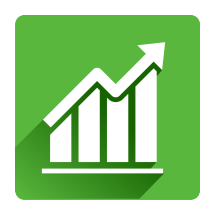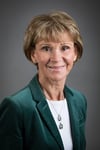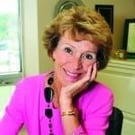
Marketing content shared with Michigan Business Network by:
Bonnie J. Knutson, PhD
The School of Hospitality Business
Broad College of Business
Michigan State University

When something happened, good or bad, my mother would tell me to remember that everything happens in threes. This fabled rule of three is not part a fortune teller’s toolbox; it is a writing principle that suggests “a trio of events or characters is more humorous, satisfying, or effective than other numbers.” It is derived from the Latin phrase, “omne trium perfectum,” which loosely translated means that when something comes in threes, it is perfect or complete.
In thinking about what will impact sales and marketing down the road, I put my Radar O’Reilly hat on. Radar (whose actual name was Walter) was the unorthodox company clerk in the long running television series, M*A*S*H *. He was given the nickname of Radar because he could sense a helicopter approaching with the wounded before it was in sight or before anyone else could hear it coming.
A while ago, I was watching a financial news how when I heard a guest talking about how we will be “popping” in and out of the education world throughout our lifetime. Projections suggest that today’s college graduates will change jobs at least four times in the first ten years, while those in the Baby Boomer generation will average 12 different jobs in their lifetimes. I found it interesting that he made “popping in and out” seem as if it were a revolutionary concept. It is not. Futurists have been writing about when we learn, when we work, and when we retire for years. First, we go to school to learn stuff, then we go out to work to use the stuff we learned, and finally we retire, forget all about the stuff and go on a cruise. This learn-work-retirement pattern has been described as the Linear Life Plan and was brought to the forefront by Ken Dychtwald more than 30 years ago in thinking about what will drive business in the future.
He showed how seismic forces alter the way we learn, work, rest and forge a different life pattern, which he named the Cyclical Life Plan. While it would take a book to list all these seismic forces, here is my Radar O’Reilly version of three that will drive marketing and sales into the foreseeable future.
Knowledge is King. Futurist Buckminister Fuller concluded that human knowledge doubled about every hundred years until about World War II when the rate of doubling shrunk to every 25 years. He called it the “knowledge doubling curve.” Later, IBM predicted that, by 2020, the Internet of Things would enable knowledge to double every 12 hours, reality in 2022. It is no secret that human knowledge is growing at an exponential rate, and we may reach a point where it increases faster than the human brain can retain it. So are we currently training people for jobs that do not even exist yet, using technologies that have not been invented yet, to solve problems we do not even know we have yet? The answer is yes.
The foundation of integrating a cyclical educational element into your business strategy is not new. Disney’s famous Institute offers professional development courses at its parks and resorts. And learning has always been a component of seminars, workshops, conferences, and meetings. Given the increasing speed and power of our virtual world, these learning places could readily be an Airbnb, a resort at the shore, or a shady tree in a park somewhere. We also know that being in a different environment gives the mind a fresh perspective and enhances retention and creative thinking. And is that not what learning is all about?
Living longer and aging better. It is no secret that in the U.S., life expectancy has risen. If you were born in 1860, you would have been lucky to see your 40th birthday. By 1935, when Social Security was enacted, men were projected to reach 60 while women would make it to 64. Today, life expectancy is 79 years. For the first time in history, then, there are six generations of consumers. This means there are also six generations of your current and future customers and employees. And as we all know, each cohort has its own set of needs, wants, values and reasons for learning and for working. And they communicate differently.
AARP calls seniors the “hottest demographic in the labor market,” working far past the traditional retirement age into their 70s, 80s, and sometimes beyond. It estimates that, in 2022, about a third of 65–75-year-olds will still be working and remain at approximately 11 percent for those over 75. Interestingly, while financial insecurity is a factor for some, having a sense of purpose is a bigger driving force. And despite what a lot of people think, seniors do care about learning something new – both personally and professionally. Otherwise, why would universities be constructing residential housing for seniors? As the number of high school graduates decline, the fastest demographic growth over the next ten ears will be among people 65
and older. This shift in generational cohorts encourages more creative thinking about the senior market and your business. Remember the 2015 movie, The Intern, starring Robert DeNiro?
More time for leisure. With the constant 24-hour barrage of emails, LinkedIn, Instagram, and texts, it sure does not seem like it, but we are working fewer hours per week than ever before in U.S. history. In early 2022, the average work week for all employees on private nonfarm payrolls in the United States was 35 hours. This is 16 fewer hours than the 51+ hours our grandparents would have been working back in 1924. Those 16 fewer hours equate to two traditionally full eight-hour workdays. Put it another way, it equates to two more days during which people can jump in a car, a bus, a train, or in a plane for a getaway.
While Americans are often reluctant to take the full amount of their vacation time, businesses are recognizing the value of employees breaking away for a few days. And they are putting their money where their value is. Recently, PricewaterhouseCoopers encouraged its employees to use their vacation days by paying them additional money to do it, in addition to giving them salary increases and bonuses across the board. Not only was this a special thank you, but a strategy to keep their employees. Given the shortage of qualified employees in the labor market, this move may be a sign of things to come.
The French essayist, Paul Valery, said, “The trouble with our times is that the future is not what it used to be.” Given this truism, we all must be like Radar making sure our radar is constantly up and working to aggressively monitor what is going on that can directly, or indirectly, affect our business – demographic, social, economic, technological, and political. Instability can happen anywhere or anytime. If your radar is up 24/7, you can detect the first signs of change, giving you time to defend against threats to your business or take advantage of opportunities that may present themselves. The biggest dangers to any brand are the ones management does not see coming. Understanding these threats – and anticipating opportunities – requires strong peripheral vision. In other words, a 360o radar screen.
The past two years have been a “glass half empty” on many fronts, but they also have been a “glass half full” on others offering incredible possibilities for your business to refresh, rebuild, and reignite. Benjamin Franklin said, “When you are finished changing, you are
finished.” Well, your company is not finished changing, and it is not finished. I am excited for the future. Are not you?
Your Bottomline will thank you!












